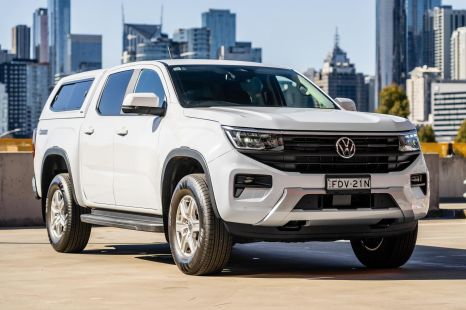

Max Davies
2025 Volkswagen Amarok Life TDI500 review
1 Month Ago
There's serious competition in the cheap dual-cab ute market for the LDV T60. Enter the new Max, with a 500Nm diesel punch at a sharp price.

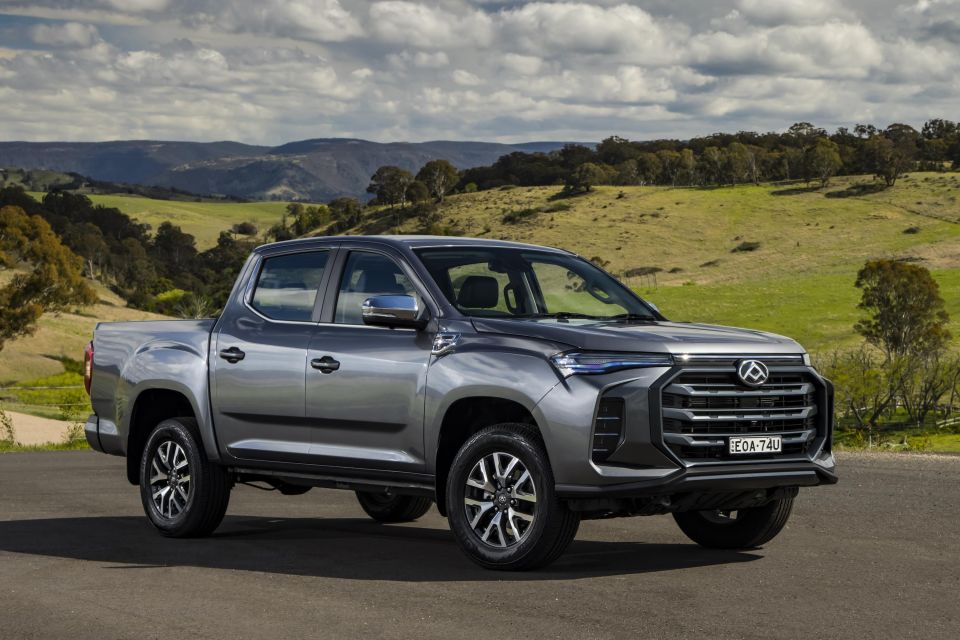

Senior Contributor

Senior Contributor


Senior Contributor

Senior Contributor
CarExpert helps new car buyers save thousands with expert reviews, honest advice, and transparent pricing – no dealer pressure and no sales games.
The LDV T60 has made an impact on Australia’s sprawling 4×4 ute market since it launched in late 2017.
The decent-looking and well-equipped dual cab came at a cheaper price than well-used HiLuxes and Rangers – with a five-star ANCAP crash rating and solid new-car warranty.
The subsequent addition of two Trailrider editions with an Aussie suspension tune added some credibility, and then the Mega Tub filled a genuine OEM void.
All told the T60 has since managed 18,300 sales at an average market share of 2.6 per cent. By the end of 2021 LDV hopes this will sit at 4.0 per cent.
Now it’s time for the ute to get a redesigned front end, a new centre touchscreen setup, and a way beefier bi-turbo diesel engine – hence the ‘Max’ suffix – among other key changes.
With other cheap workhorses like the GWM Ute and SsangYong Musso muscling in on its turf, the 2022 LDV T60 Max arrives an an ideal time. That said, LDV’s Australian arm is aiming higher, saying “we are unashamedly targeting Ford Ranger and Toyota HiLux”.
Incidentally, for those who want some history, LDV is part of the SAIC Motor group, China’s largest auto-maker, and is distributed across Australia by independent company Ateco.
Be sure to watch our detailed video review embedded above too.

There are two spec grades to choose from, called T60 Max Pro and Luxe, the latter of which carries a $4500 premium. LDV advertises ABN drive-away pricing, and we’re seeking other figures:
How does this compare to the wider market?
The 4×4 GWM Cannon dual-cab with automatic is priced between $35,990 and $42,490 drive-away, while according to Mitsubishi’s website a Triton 4×4 dual cab varies from $42,590 to $59,840 depending on spec grade.
Any used Ranger or HiLux dual-cab 4×4 priced $40,000 or less, based on current record used car prices, will likely be 3-5 years old and have north of 100,000km on the odo, based on a trawl through the classifieds.
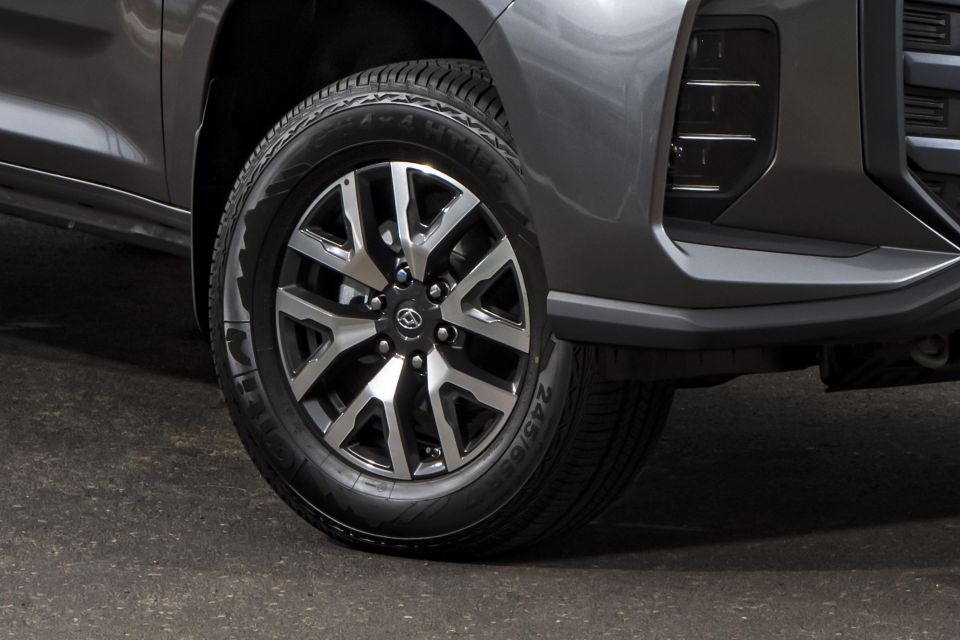
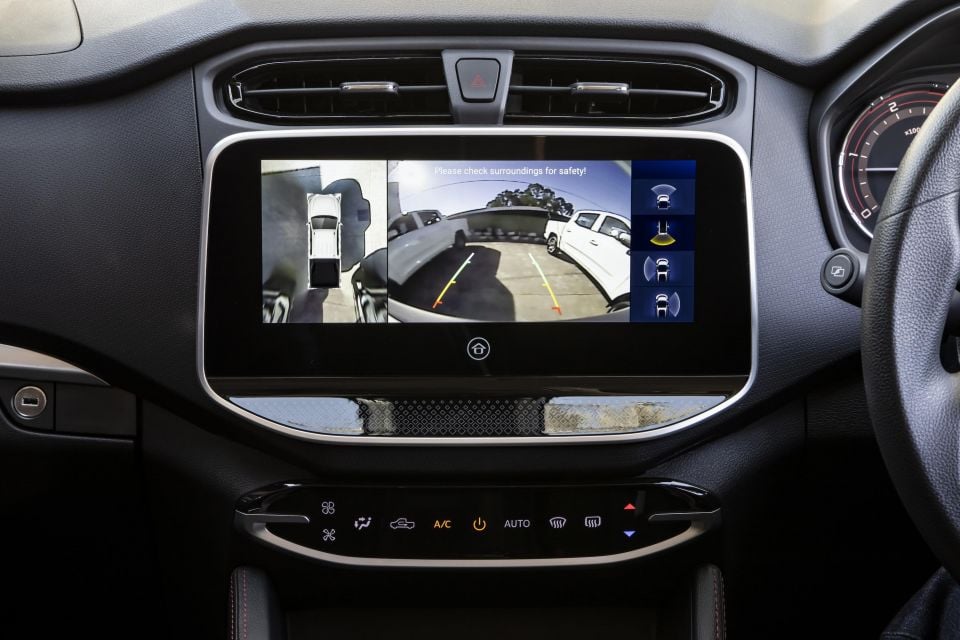
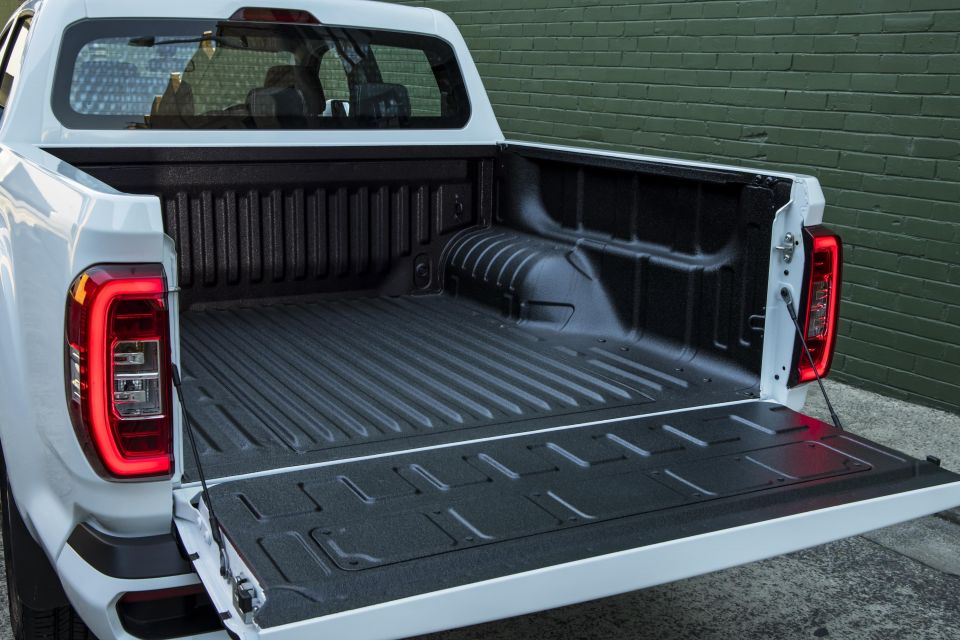
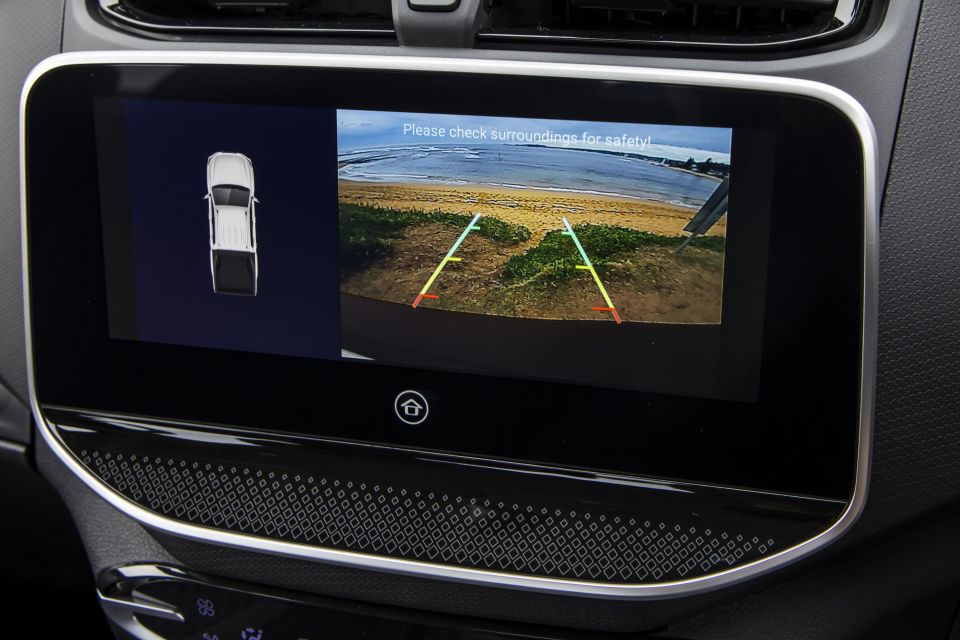
The T60 Max Pro comes with some really handy features at base level such as spray-in tub liner, rain-sensing wipers, dusk-sensing LED headlights and LED tail lights, climate control, and a 10.25-inch touchscreen.
Other standard fare includes 17-inch alloy wheels, a full-size steel spare, rear parking sensors, a reversing camera, tyre pressure monitor, cruise control, cloth seats, Bluetooth, two USBs, and Apple CarPlay.
To this the T60 Max Luxe driven here adds keyless entry (you press the door handle), a gas bonnet strut, auto-folding mirrors, black grille and chrome mirrors, lane departure warning, an auto-dimming rear-view mirror, 360-degree cameras, and powered leather-ish seats with heating.
What the top-spec model lacks are any styling adds-ons: steps or sliders, bar work, flares etc. Perhaps there’ll be more range-topping variants to come. In fact, we’d bet the house on it.

The T60 Max carries over the 2017 ANCAP five-star crash rating achieved by the pre-facelift model, and has six airbags including full-length side curtains. The back seats have top tethers and ISOFIX anchors.
However there’s very little active safety equipment – only audible lane-departure alert. There’s no autonomous emergency braking, active lane assist, adaptive cruise control, or blind-spot monitoring, which puts it behind the curve.
Its passive occupant protection is clearly good, but today’s ANCAP tests place much more emphasis on active safety assist features – meaning the five-star score attained by the Isuzu D-Max and Mazda BT-50 twins in 2020 was a more difficult assignment, for example.
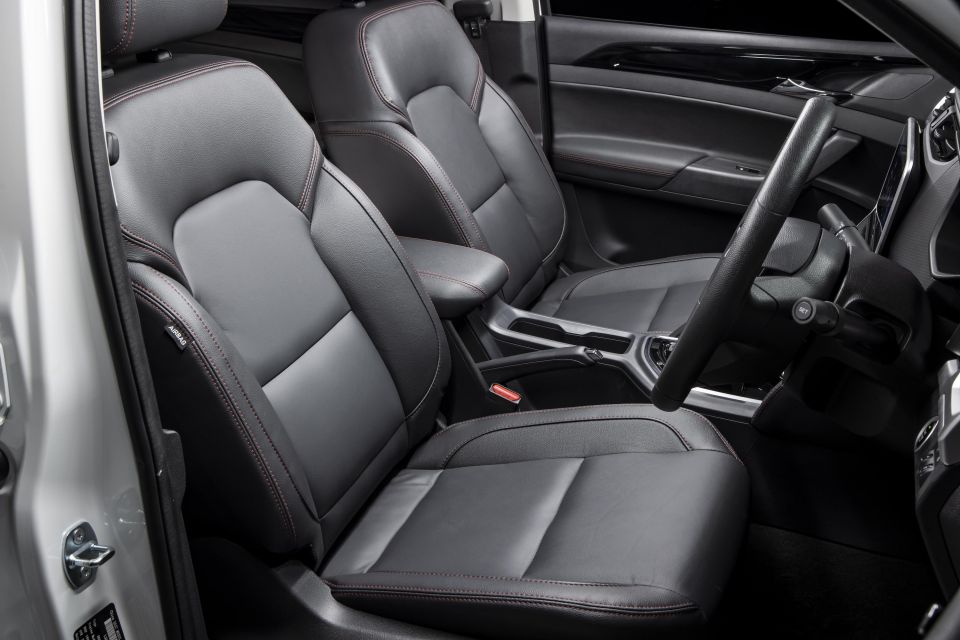
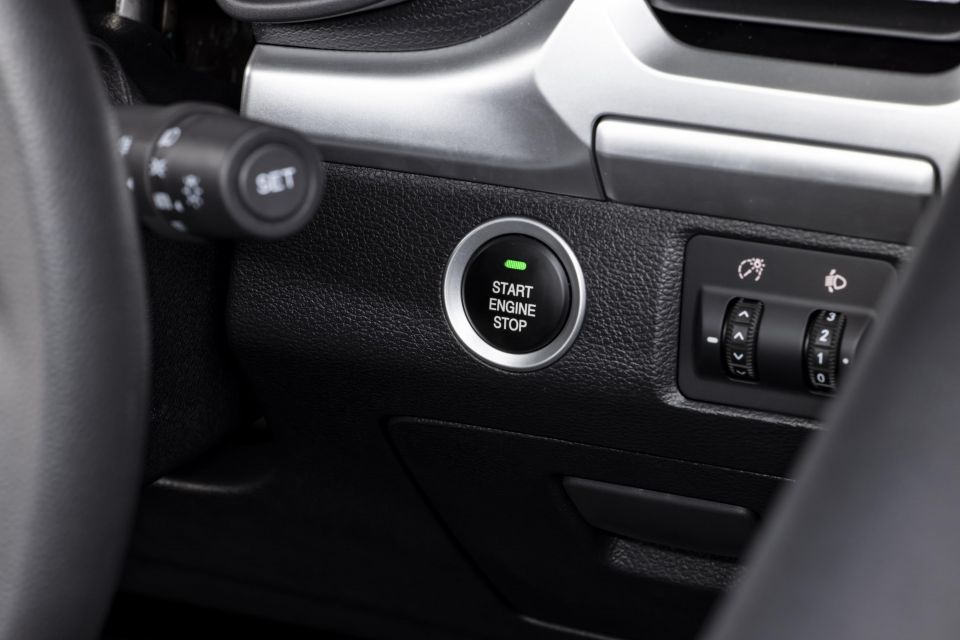
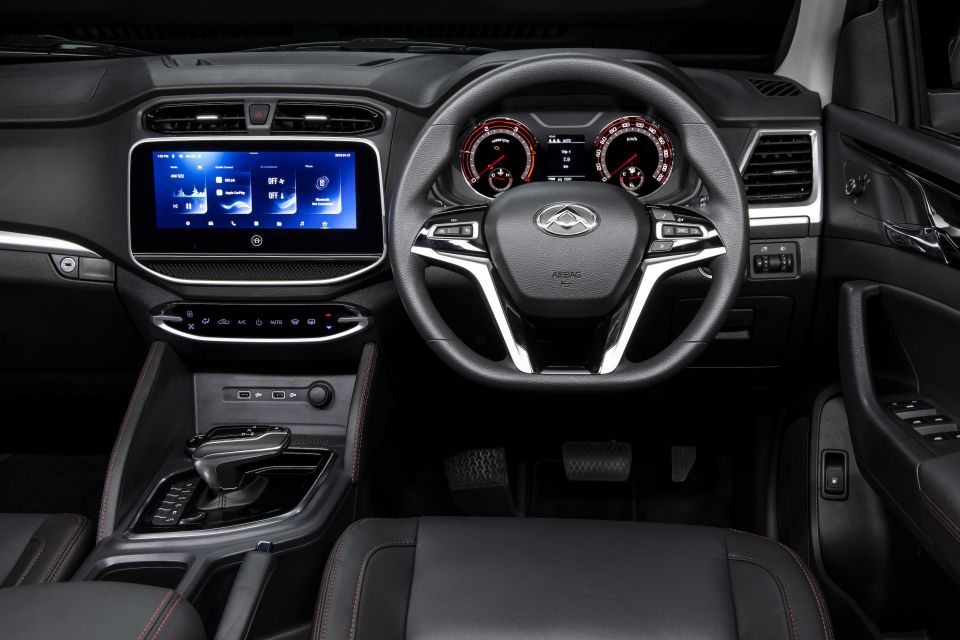
The seats are trimmed in a mixture of leather and synthetic materials, and while they could use firmer side bolstering are acceptably comfortable, power adjustable for both front occupants, and have heating.
The lack of telescopic steering column adjustment is an ergonomic oversight, though in fairness the Nissan Navara and Ranger also lack this feature. There’s a digital speedo in the small centre display, albeit a small one.
None of the top-selling dual-cab utes offer particularly high-end interiors, yet even with this in mind the LDV’s feels built to a price – despite padded touch points, contrasting patterned trim pieces, and red stitch work suggesting a nicer feel.
Some of the plastics used on the wheel, dash, stalks, switches and the lower door and tunnel sections are pretty low-rent, and the pull-out sliding cupholders below the outboard air vents are flimsy.
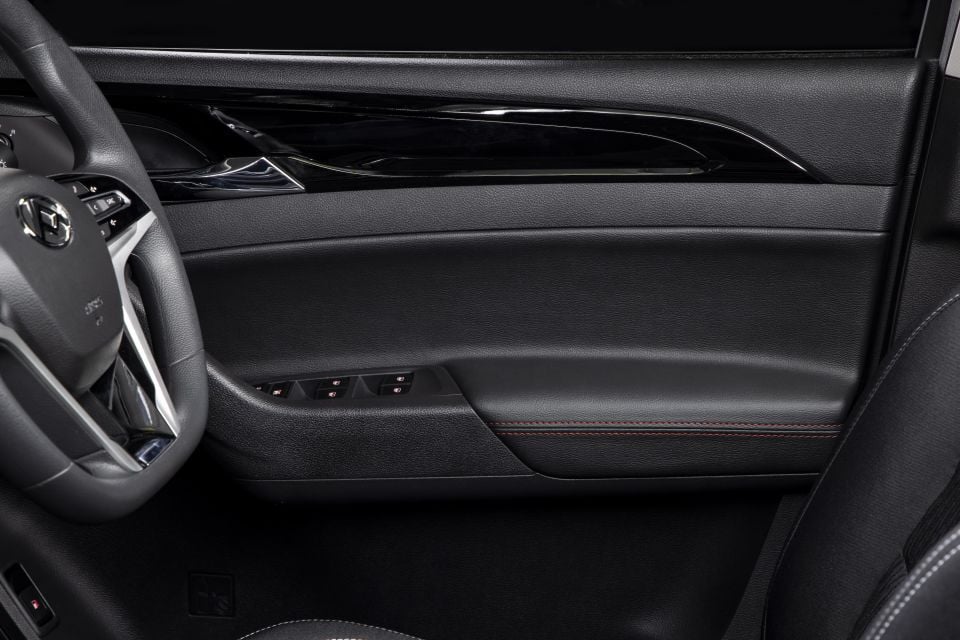
Then again, a previous-generation Isuzu D-Max wasn’t any better for the most part, and at the end of the day this is a cut-price workhorse. Will it hang together? Our car was pretty new and free of rattles but time will tell.
The old T60’s centre touchscreen looked great on paper but in reality was pretty rubbish in terms of resolution and response speed.
The new system is clearly better in terms of response and resolution, even if I’d kill for some knobs and buttons especially for volume control and access to shortcut menus.
There’s no digital radio receiver for what it’s worth, but Bluetooth streaming features.
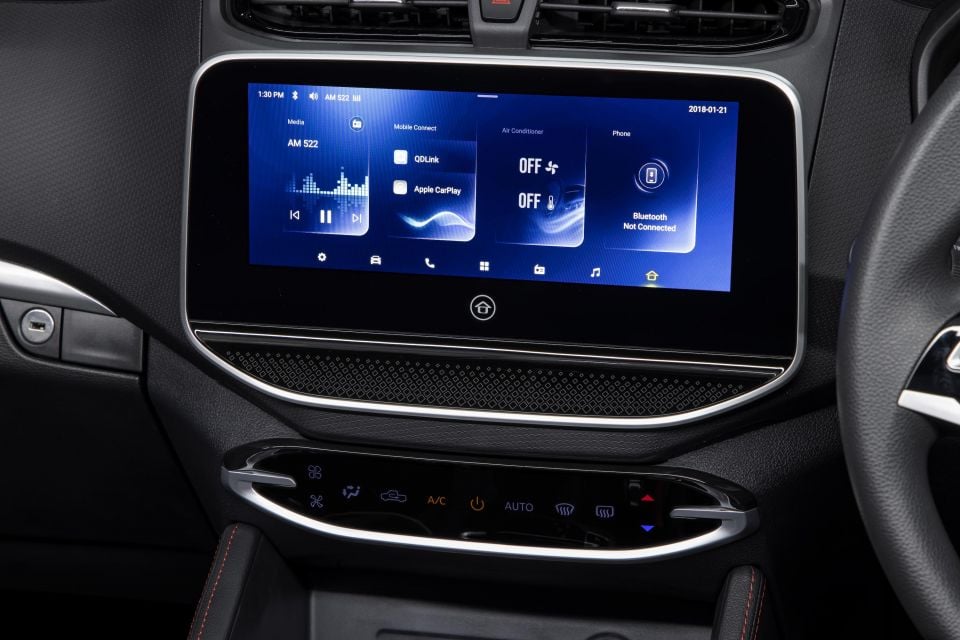

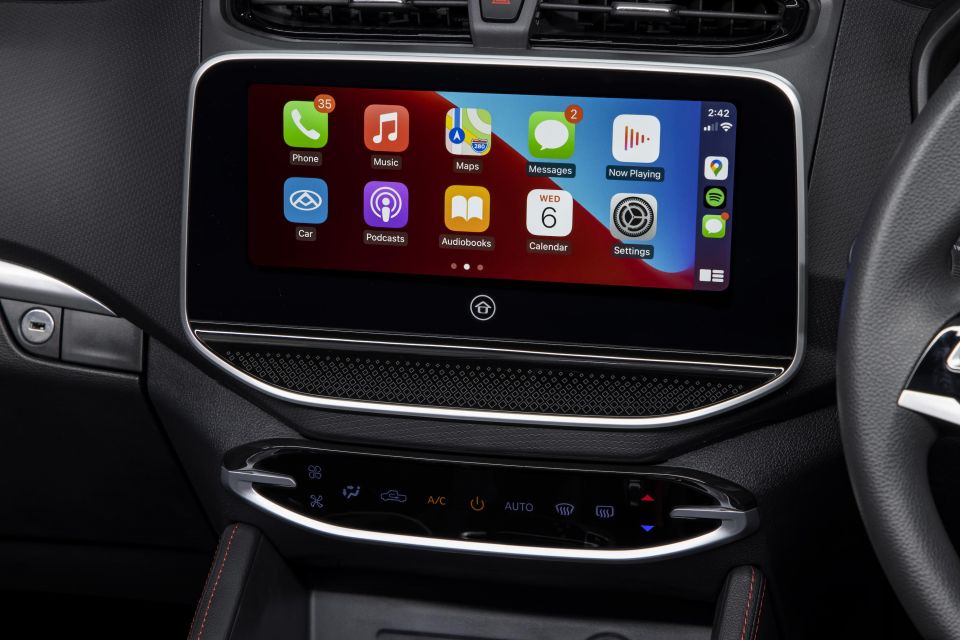
Instead of sat-nav you have wired full-screen Apple CarPlay (Android users will need to mount their device for maps), there’s a simple enough digital toolbar lower menu to access home settings, and the response speed is good. It’s also impressively large.
The 360-degree camera isn’t sharp in terms of resolution but is nevertheless a handy feature to have.
I made a few phone calls at 100km/h and while the recipients said I didn’t sound perfect, the conversations went ahead unhindered.
The climate control is adjusted by pressing the glossy plastic below the touchscreen, without haptic feedback, which then acknowledges the adjustment on the touchscreen. Give me dials and buttons, please.
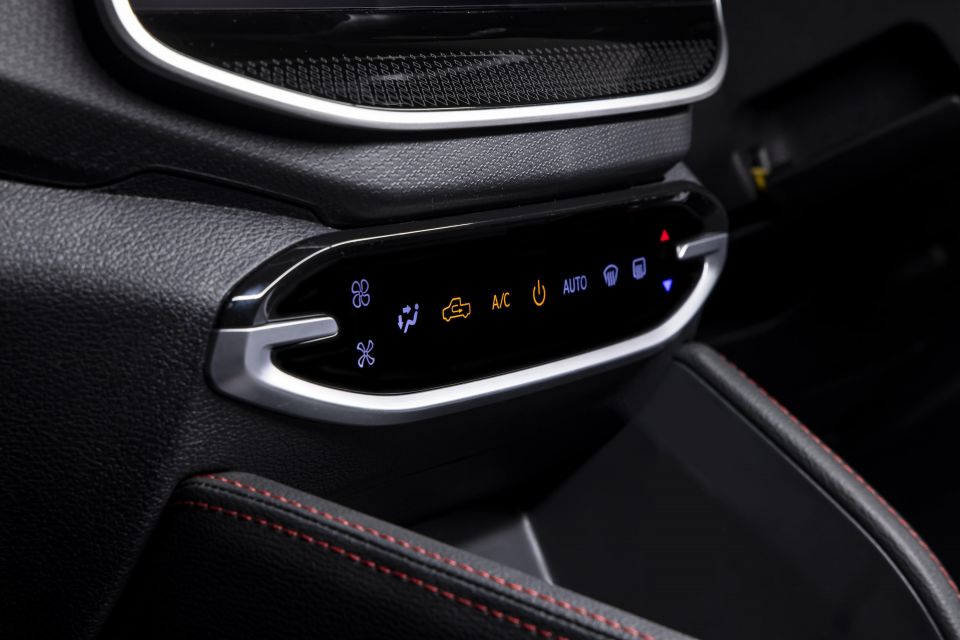
There’s a series of buttons along the centre tunnel next to the unusually shaped shifter, to control the lane-keeping chime, downhill assist control, ESP, diesel particulate filter (DPF), and driving modes.
Cabin storage is ok, including a centre console, two un-toothed cupholders, bottle holders in the doors and a pokey glovebox. There’s also a small open cubby atop the dash and a spot for your phone to perch in front of the gear stick.
The back seats – a key purchase factor driving the take-up of this body style across the market – are good. I’m 194cm, so my driver’s seat is pushed back, and yet I still found headroom and legroom behind more than sufficient for my needs.
The backrest and base both tumble (down and up respectively) for extra storage, and the top-tether point isn’t too hard to access.


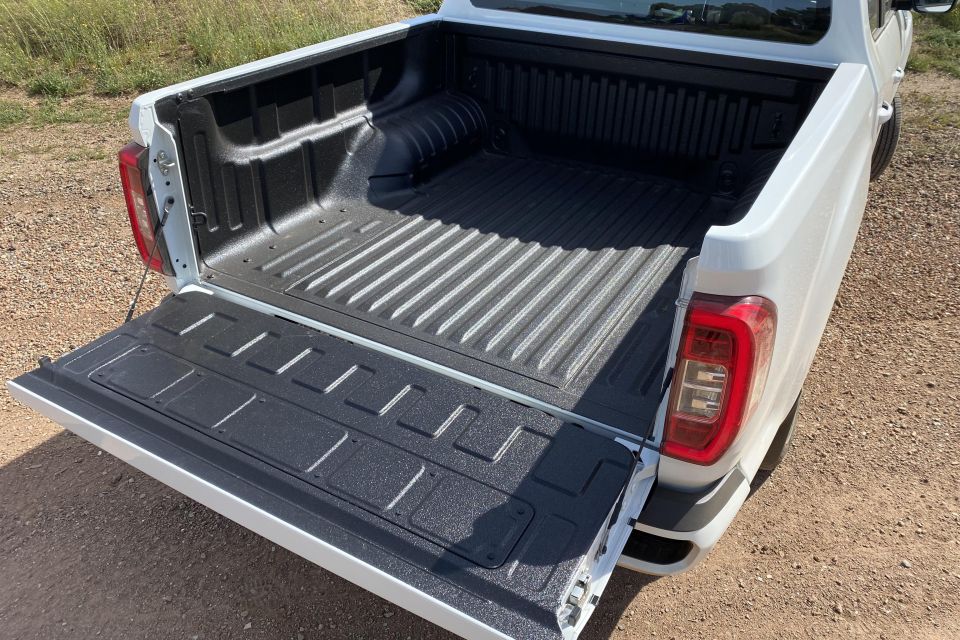
Rear occupants also get a centre armrest with cupholders, a rear 12V, reading lights, handles, and rear air vents. A couple of big blokes will sit back there happily enough if you’re heading up the corner to smoko or going camping.
The tub measures 1510mm wide by 530mm deep by 1525mm long. There’s 1131mm of room between the wheel housings. There are four tie downs, a spray-in liner, and an un-assisted tailgate.
Now, one big gripe with the build quality: The black plastic tailgate insert was already falling away, with its glue giving way quickly. Watch the video above to see more. I’d be whipping that right off.
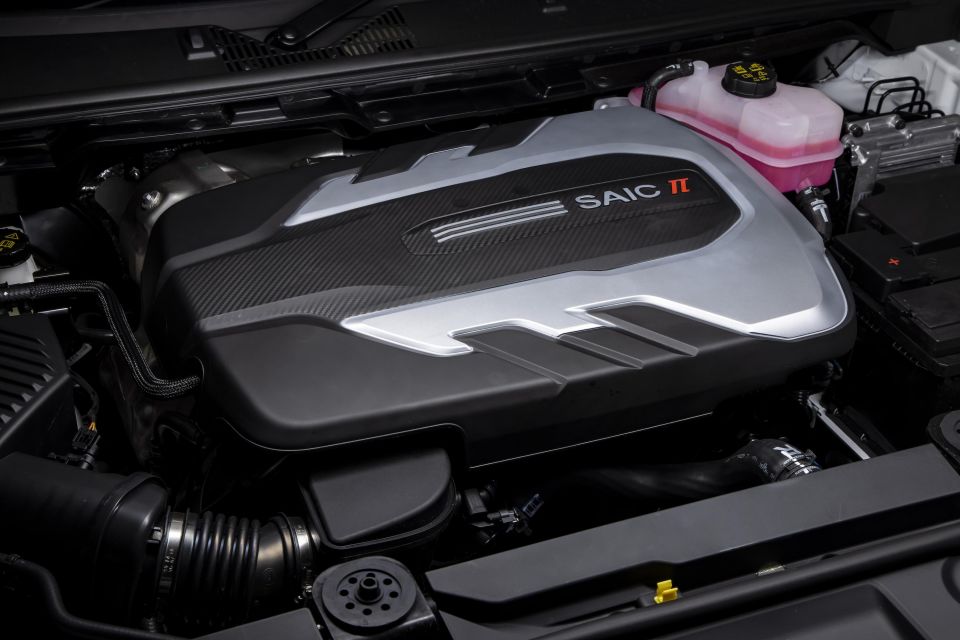

The new four-cylinder diesel engine is much more powerful than either of the two used in the pre-update T60. It claims to out-power the Ranger and HiLux – and matches their peak torque.
The 2.0-litre bi-turbo (two stage) was developed in house by LDV’s parent SAIC Motor, and produces an impressive 160kW of power and 500Nm torque from 1500rpm.
Towing capacity is 3000kg – 500kg down on the class leaders, though most experts will tell you towing 3.5t with any of the Thai- made dual-cabs without suspension work at least isn’t something to be done with regularity anyway.
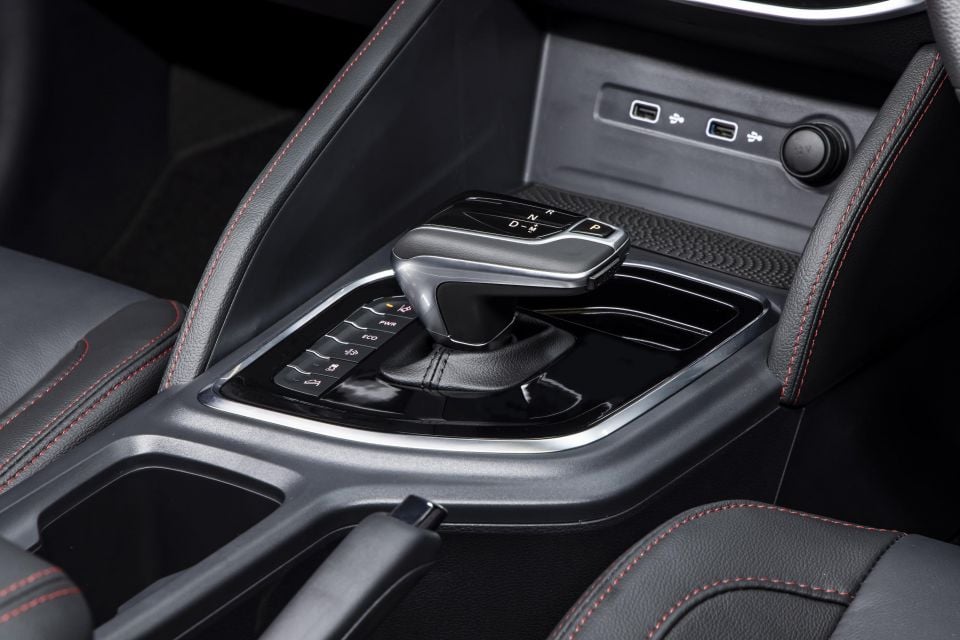
It’s mated to an eight-speed automatic transmission or a six-speed manual, and uses a new torque-on-demand (meaning set and forget) variable 4WD system for on- and off-road use. It also has low-range gearing.
Automatic models have Eco and Power drive modes that changes the gear shift characteristics to be more or less aggressive. Rather subtly, it turns out.
As young brands tend to do, LDV talks up its Tier 1 supply partners: there’s Bosch fuel injection, a ZF automatic, and BorgWarner torque-on-demand.
Fuel consumption on the combined cycle is 9.2 litres per 100km for the manual and 9.3L/100km for the automatic. The engine meets Euro 5 emission standards. The tank is 73L.

The engine isn’t quiet, with a more pronounced and truck-like rattle from outside than other options out there. The 2.0-litre four doesn’t lack sophistication next to its competitors on paper, but it does sound like an older donk. It’s similar from the inside too.
Once you hop in and familiarise yourself with the auto-centring gear shifter – tap forward once for reverse and pull back for drive, with park controlled by a button – everything is pretty reachable and navigable.
LDV to its credit has shifted the indicator stalk to the right-hand side of the column, which is not something all vehicles developed first for left-hand drive markets can claim. To be honest this issue isn’t one that worries me too much, but I know for some people it’s a real gripe.

The engine’s outputs are impressive on paper, and its rolling response for overtaking or entering a faster speed zone is good. Not shove-in-the-chest good, but it certainly has solid and meaty pickup, and a relatively intuitive automatic that goes about its business.
The old 2.8-litre T60 felt much more sluggish by contrast, that’s for sure. There’s a heap of torque once you’re at the right engine speed.
The low-speed throttle response could be sharper though, even in sports mode. It strikes me as a calibration issue, which would in theory be a software change, just to add some response upon strong throttle inputs. Acceleration was never as immediate or linear as I wanted.
What was the 0-100km/h time? 10.68 seconds, which is only middle-of-the-road, therefore reflecting that throttle tune.

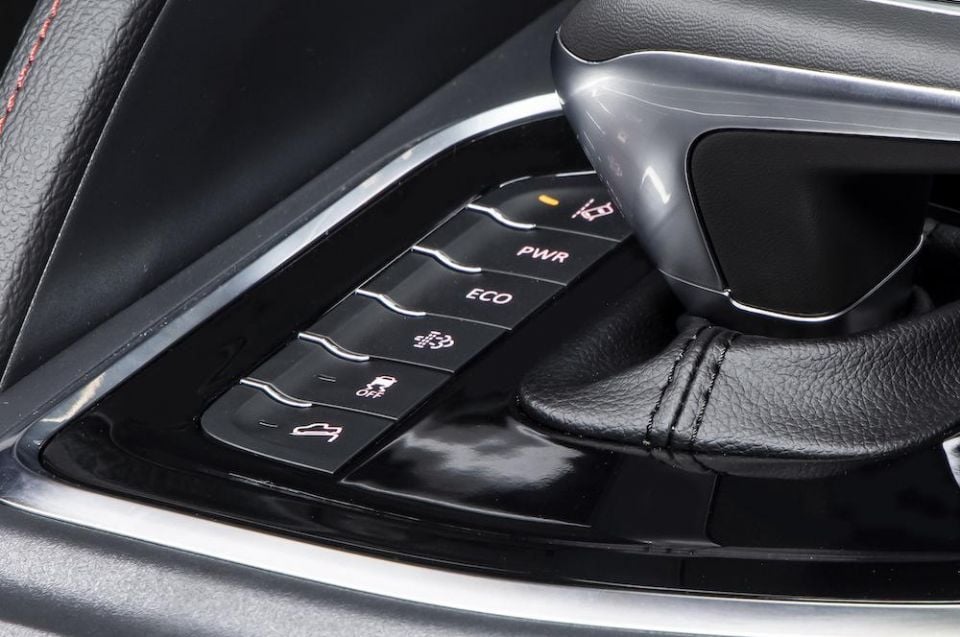
CarExpert helps new car buyers save thousands with expert reviews, honest advice, and transparent pricing – no dealer pressure and no sales games.
Fuel-use wise, I covered 350km on a mixed route and averaged 9.6L/100km, which pretty much matches the claim. Big tick for a ute without many k’s on it.
T60s use hydraulic power steering, so it’s quite hefty at low speeds and you feel road bumps more through the wheel. Next to all the newer-design utes with electric power steering, it feels like a throwback – for some people that might actually be seen as a positive.
The suspension keeps it pretty well balanced in corners by ute standards and our Luxe variant’s five-leaf rear setup wasn’t unusually jiggly when unladen.
The trade-off is a modest 750kg payload compared to the base T60 Max Pro’s 935kg from its heavier duty leaves.

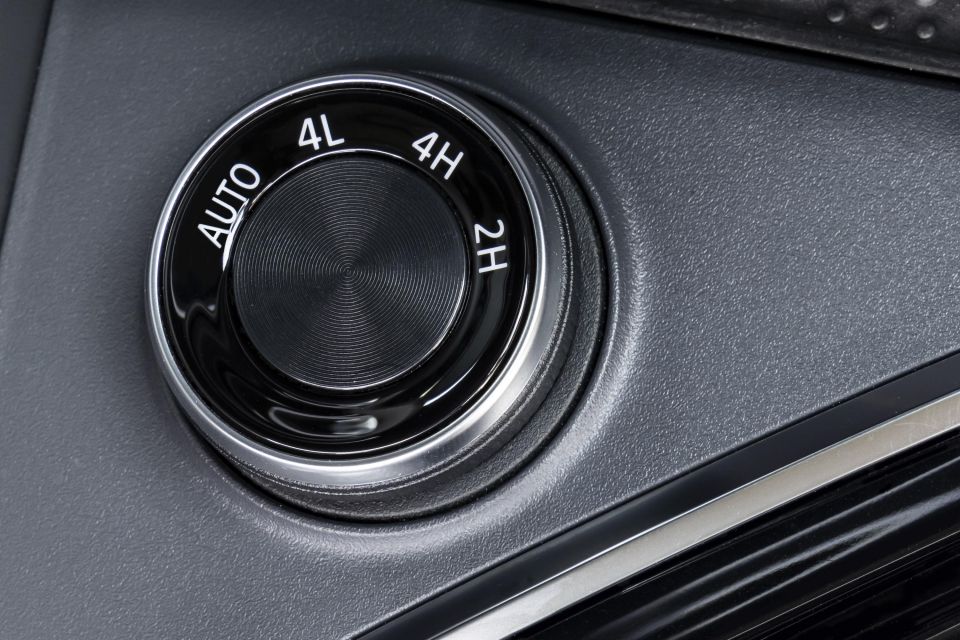
Unlike its two cheap ute rivals, LDV (well, Ateco) has had some suspension tuning work done in Australia – by Walkinshaw, dating to the Trailrider program – and when you seek out classic Aussie ungraded and corrugated gravel and coarse chip patchy B-roads, it shows.
The Luxe rides on 17-inch wheels with 265/65 R17 Giti-branded ‘4×4 HT 152’ tyres – they seemed inoffensive enough but aren’t especially off-road ready – and unlike many much more expensive utes it has disc brakes at both ends, not just up front.
It also has that really interesting 4WD system controlled by a rotary dial. It defaults to the already-mentioned Auto mode’s real-time torque-on-demand AWD system, which you can use on the road without worrying about driveline wear and tear.
But additionally a dial lets you override and select rear-drive (conventional 2H), high-speed 4WD with a 50:50 torque split (4H), and low-range (4L).
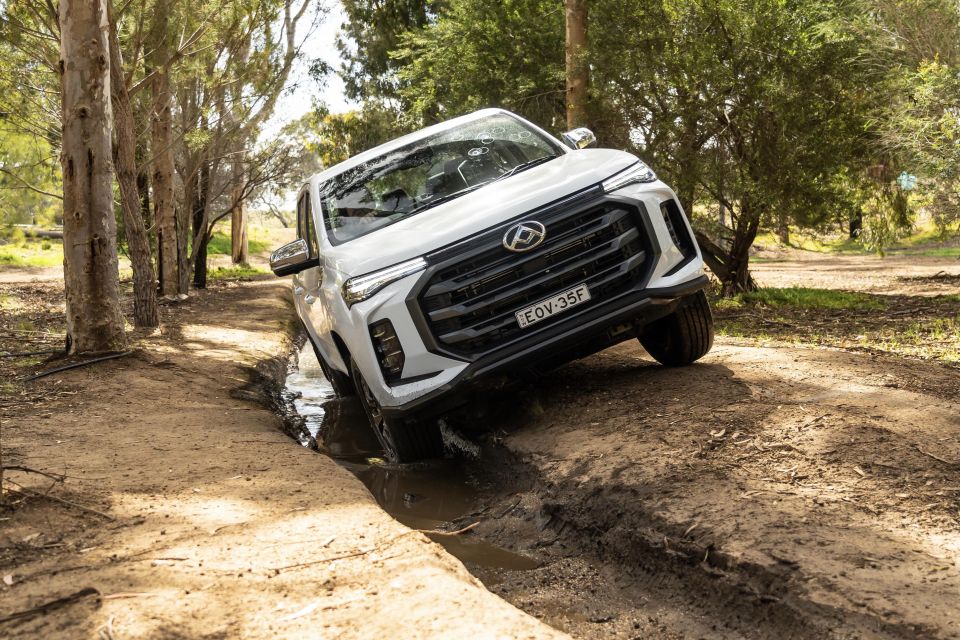
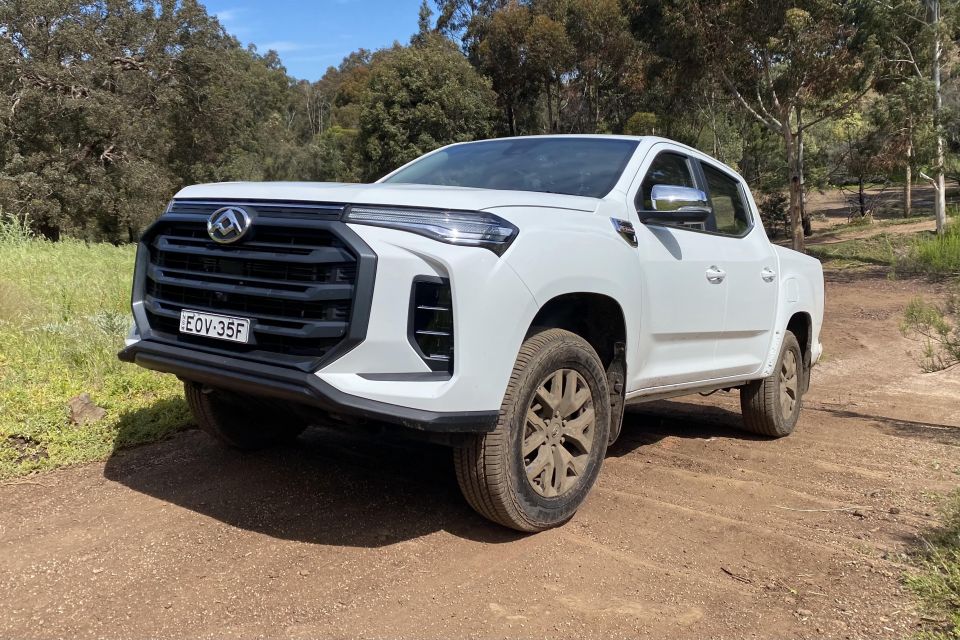

The T60’s approach angle is 27 degrees, its departure angle 24.2 degrees, its clearance is 215mm, its turning circle is 12.6m, and the maximum wading depth is 550mm.
While the throttle lag doesn’t help, the 4WD system clambered up some logs in standard Auto mode without losing traction. On a downhill section the brake pedal felt good, the suspension offered some modicum of comfort while articulating, and the low-range felt pretty tractable.
Over some offset moguls in Auto mode, it shuffled the torque around pretty intuitively, though we noticed enough body flex to make the doors catch with a tyre airborne.
The Luxe grade also adds a locking rear diff that self-engages at low speeds when the T60’s brain detects different wheel speeds. You can’t engage it yourself. It certainly works, though it’s reactive and kicks in aggressively. Better than nothing, but a switchable one is better.
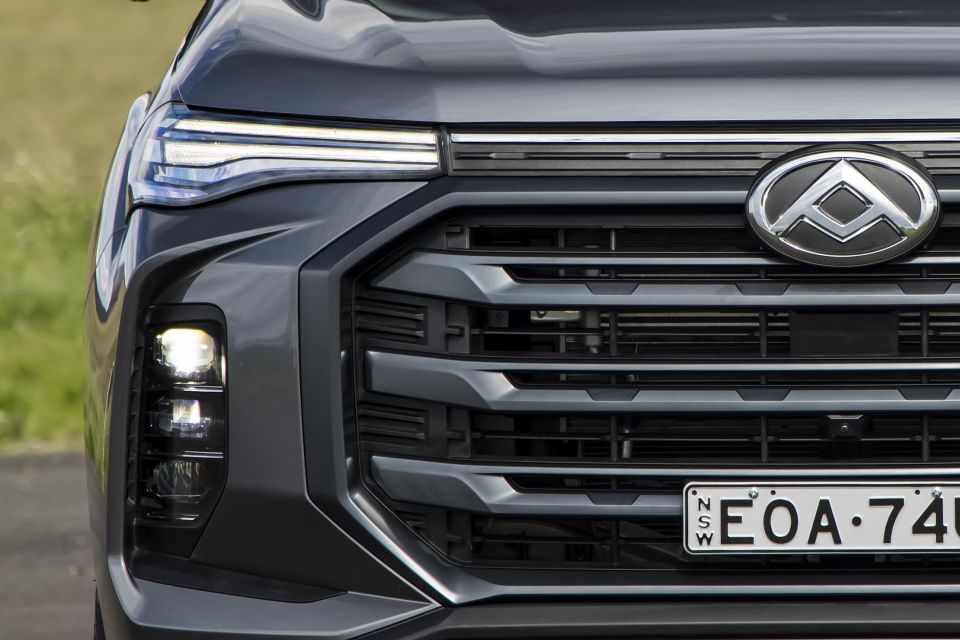
All LDV T60s come with a five-year/130,000km warranty and matching roadside assist policy.
We’ve enquired about capped-price servicing costs, and we’ll update when that becomes available.
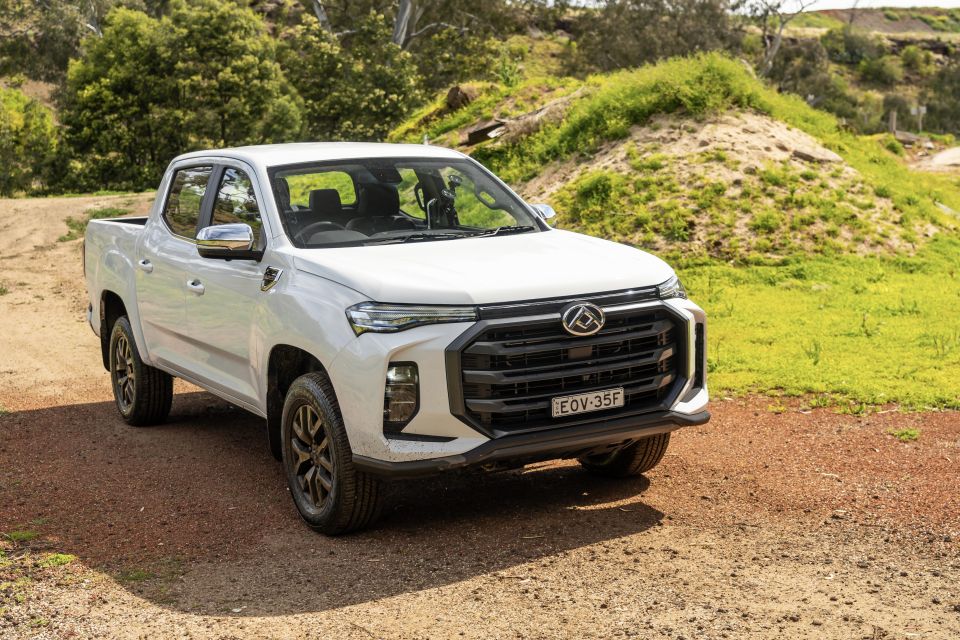
The good stuff? It’s not quite as cheap as it was but it’s still affordable; the cabin is roomy; the engine has plenty of torque; it has a good touchscreen setup; the suspension is sorted; and the LDV brand is growing fast – suggesting continued support.
There’s more competition at the market’s bottom end from similarly cheap utes with flashier cabins or more tech, but the T60 Max has them covered for now in terms of drivetrain outputs and suspension tune.
We didn’t like the throttle tune, engine refinement, fit-and-finish in areas, and lack of active driver-assistance features. Not everyone wants them, but plenty of people do, and almost every other ute has the T60 Max beaten in this regard.
In the end, this T60 Max will sell, and sell well, there’s no doubt about that, even though there’s scope for improvement there. Maybe the Trailrider 3 will be a game-changer.
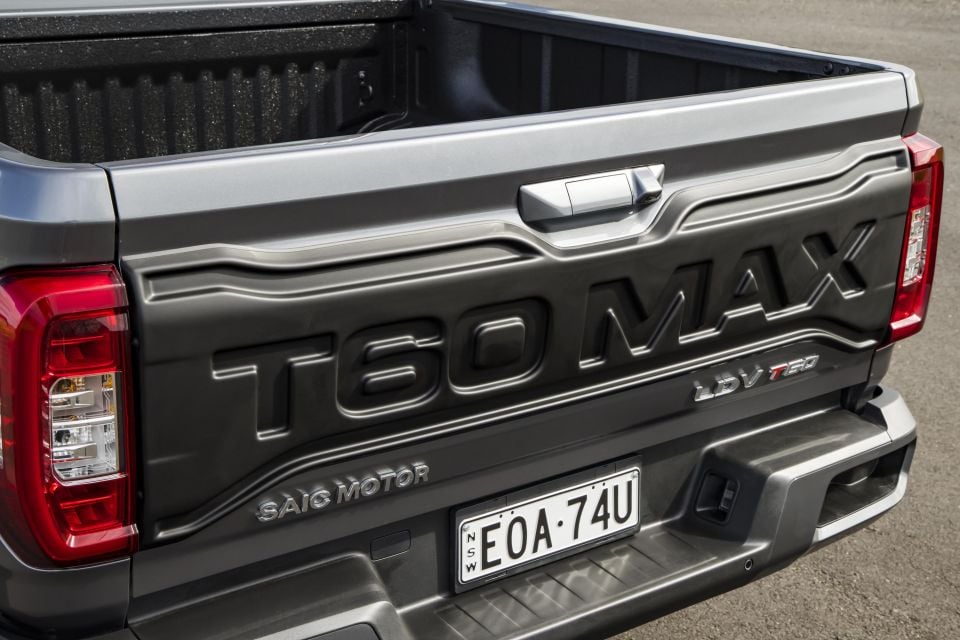
Click the images for the full gallery
MORE: Everything LDV T60
CarExpert helps new car buyers save thousands with expert reviews, honest advice, and transparent pricing – no dealer pressure and no sales games.


Max Davies
1 Month Ago
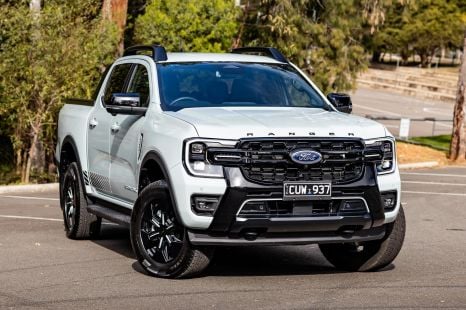

Matt Campbell
17 Days Ago
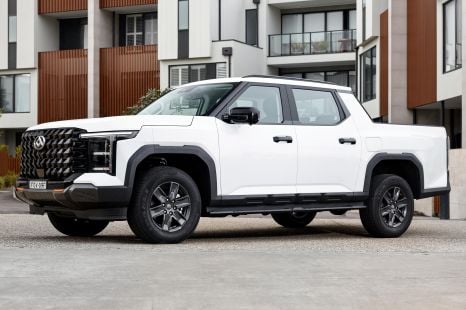

Damion Smy
9 Days Ago


Josh Nevett
7 Days Ago
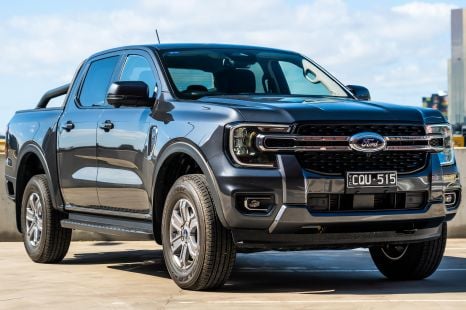

Damion Smy
7 Days Ago
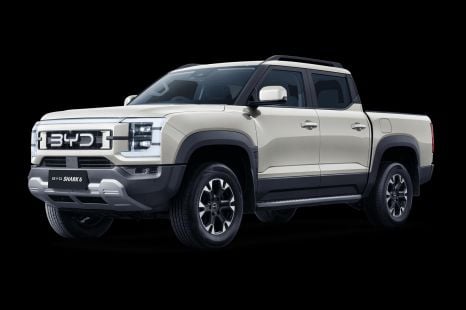

William Stopford
7 Days Ago